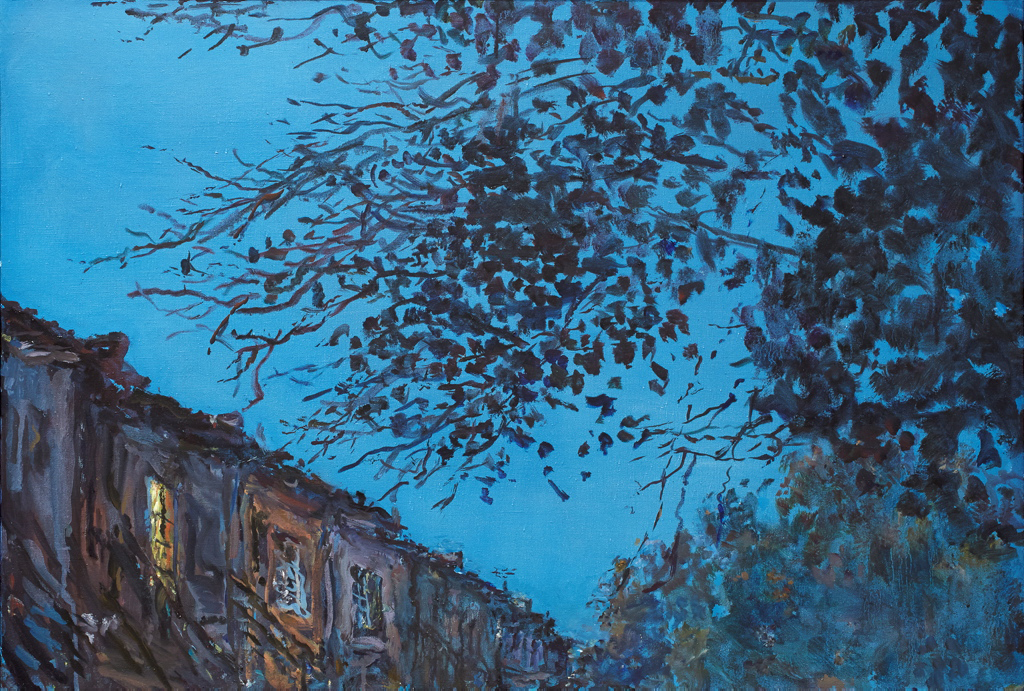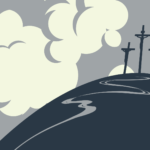Review: Womerah Lane by Tom Carment
Painter Tom Carment lives in Darlinghurst, in an area typical of inner suburban Sydney, a narrow, one-way street of two-storey terraces where the residents are in close quarters, old sandstone walls flank footpaths, jacarandas flamboyantly decorate the skyline, bougainvilleas spill over fences. Carment describes the area, where he has lived for decades, as formerly seedy, now somewhat gentrified (Bill Granger’s café is on the corner) but retaining a sense of community. He describes the neighbours’ kids drawing at his kitchen table, neighbours borrowing his ladder, neighbours bringing in his washing when those sudden Sydney storms threaten.
His lovely book of autobiographical essays, sprinkled with examples of his art, documents in words and pictures his neighbourhood, and spirals outwards to his excursions to Sydney’s beaches and bush, and longer trips to the Outback. He is a plein air painter – it’s ‘about all I do,’ he says humbly – and with his artist’s eye he notices what the newcomer sees and the resident becomes oblivious to, as well as the little things locals know about but newer arrivals need to fossick out. His illustrations are dappled, impressionistic, pleasantly loose, but with a surety of composition, proportion and perspective. They are not showy, or pristine or sublime, but, rather, show a somewhat Australian acceptance – love, even – of a level of roughness and quirkiness, as well as conveying the brightness of our Australian light. In the streets of Sydney he is attracted to power poles and old walls revealed by demolitions. I particularly like how, when commissioned to add to a collection of artworks commemorating the building of the Sydney Opera House, Carment decides to paint just the steps, with lingering tourists, instead of the grandeur of the sails.
His writing, similarly, shows a light touch and a familiarity, but with an inquisitive nature, punctuated by a little joke or odd reference. He writes about his still life painting, familiar trees in the Sydney streets, as well as visits to remote places, where he paints trees and windmills and fences. As well as his ramblings through the landscape, the book is a ‘geography of people’. Landscapes are never abstracted from people. He remembers novelist Gillian Mears in Grafton and Brett Whiteley at Lavender Bay, full of energy. (Whiteley is encouraging but describes Carment’s style as ‘a bit toothbrushy’.) He helps clean out photographer Olive Cotton’s studio in Cowra.
He writes about Albert Namatjira, who was something of an inspiration for Carment’s plein air painting. He recalls likin Namatjira’s art despite the sniffy criticism it received for being supposedly merely ‘illustrative’, neither modern art nor ‘authentic’ desert art. (Although desert art/dot painting was a triumph, it did create expectations of what Indigenous art was supposed to look like, a prejudice that has sometimes hampered Indigenous artists since, especially those not from the Outback.) As an artist well-versed in art history and knowledgeable about technique, as well as a fellow watercolourist, Carment can describe exactly what’s happening in Namatjira’s art. Namatjira had a deceptively exquisite handling of the medium, conveying his appreciative sense of place. Carment turns a similar sharp eye and warm heart to his landscapes and streetscapes.
Nick Mattiske blogs on books at coburgreviewofbooks.wordpress.com












